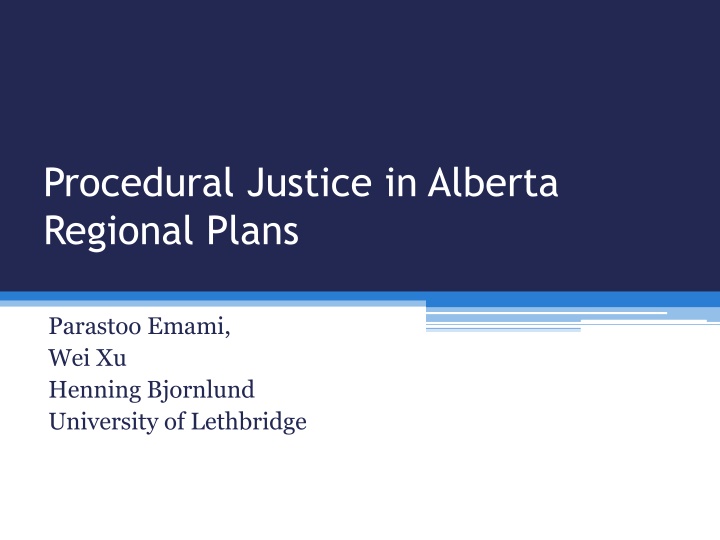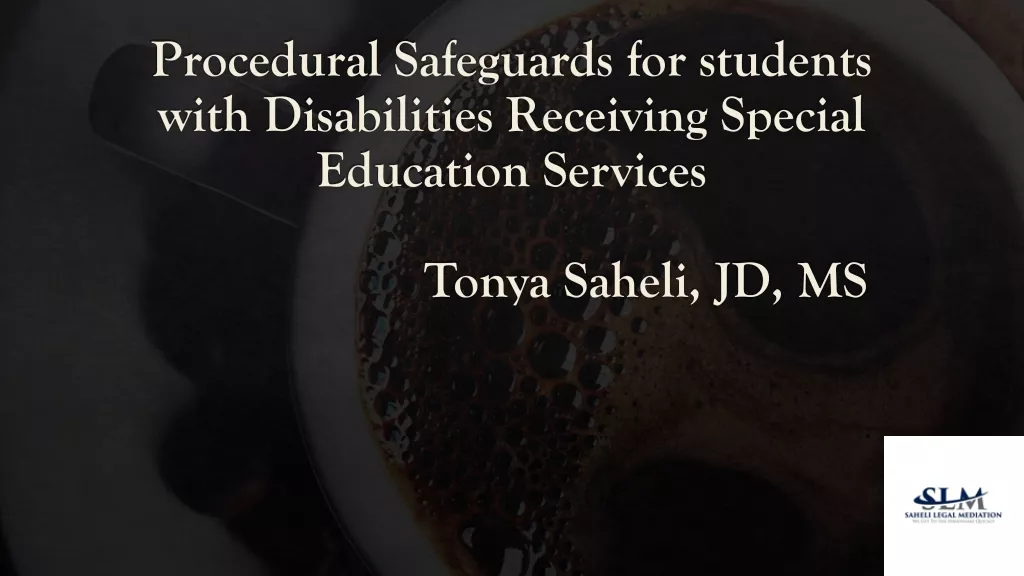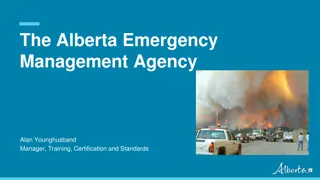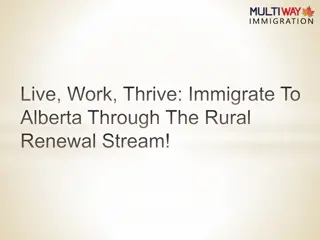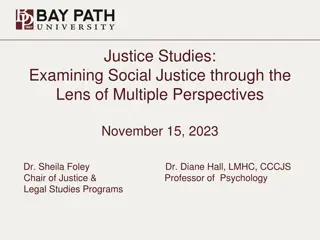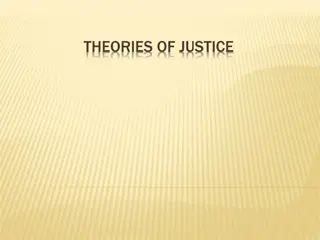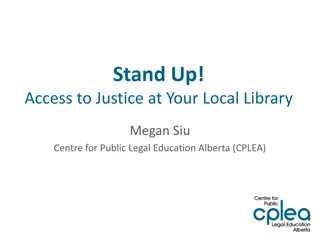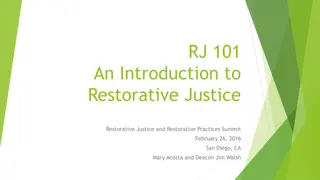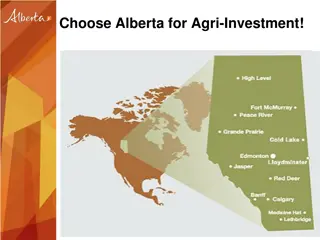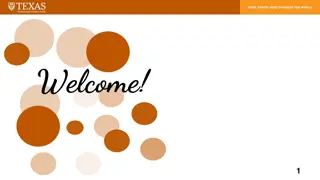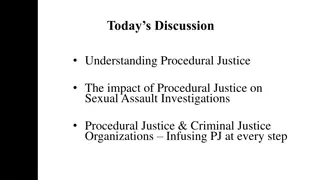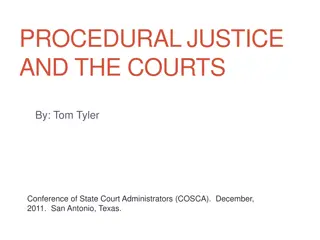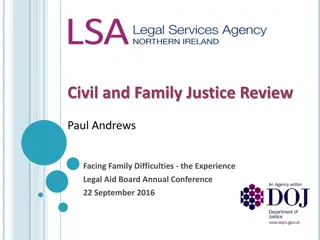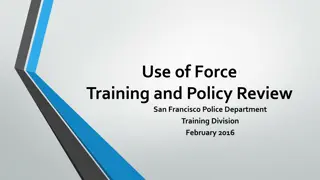Procedural Justice in Alberta Regional Plans
The presentation explores Procedural Justice in Alberta Regional Plans, focusing on Integrated Resource Management, qualitative research, fairness, and interconnectedness. It discusses the government's initiatives and challenges in managing land, water, air, and biodiversity while balancing economic, social, and environmental goals.
Download Presentation

Please find below an Image/Link to download the presentation.
The content on the website is provided AS IS for your information and personal use only. It may not be sold, licensed, or shared on other websites without obtaining consent from the author.If you encounter any issues during the download, it is possible that the publisher has removed the file from their server.
You are allowed to download the files provided on this website for personal or commercial use, subject to the condition that they are used lawfully. All files are the property of their respective owners.
The content on the website is provided AS IS for your information and personal use only. It may not be sold, licensed, or shared on other websites without obtaining consent from the author.
E N D
Presentation Transcript
Procedural Justice in Alberta Regional Plans Parastoo Emami, Wei Xu Henning Bjornlund University of Lethbridge
Index Introduce the Case study Alberta regional plans Literature review IRM (Integrated Resource Management) Procedural justice* Conducting qualitative research Identifying procedural justice components Interconnectedness component Conclusion *In this presentation fairness and justice are used interchangeably and considered synonyms. Although, the terms fair or fairness is often used in the social psychology literature rather than the terms just or justice.
Alberta Regional Plans The province of Alberta adopt new environment and resource management system to utilities and protect the natural resources(2008): The world s largest reserve of unconventional fossil fuel (Schmidt,2014) One of the largest agricultural land in Canada The fastest population growth in Canada (Sunder,2010) Human footprint impact on land, water, and biodiversity
Alberta Regional Plans The government of Alberta encourage a shift toward : Cumulative Effect Management System(CEMS) Integrated Resource Management (IRM) is facilitated Land Use Framework (LUF)(2008) Alberta Land Stewardship Act(ALSA)(2009) Create the framework and the legal basis for Alberta Regional plans
Alberta Regional Plans Seven regions are created based on watershed and municipals' boundaries (The map retrieved directly form ESRD Website, 2014) Employ cumulative effects management approach to identify target and thresholds Regional Plans Manage land, water, air, and biodiversity Balance economic, environment, and social goals
Alberta Regional Plans Alberta Regional Plans are designed with control and command (top-down) management structure IRM emphasise on dynamic interplay of power move toward multi agent/ actor decision making process Water for Life Strategy, which facilitate a transition management from government to governance by introducing water governance partnership Concerns were raised about how the integration will happen
Research questions? How did the fairness of regional planning process perceive in Alberta by public and stakeholders (water partnerships ) ? What are critical components of fair planning process in Alberta's regional plans? How do critical components of fair planning process components are interconnected?
Literature review Social Psychology: Social justice: fair and equitable allocation of bargaining powers, resources, and burdens in society (Prilleltensky and Nelson, 1997 ) philosophical: proportionality or egalitarianism Equity the evaluation of whether an outcome was just characteristics of decision making process Social Justice Distributive Justice Procedural Justice
Literature review There are three main theories that have effective impact on current researches on procedural justice Theories Main Themes Legal process has to resolve conflicts in such a way as to bind up the social fabric and encourage the continuation of productive exchange between individuals (Greenberg and Colquitt, 2005, p.22). Theory of procedure(1) (Thibaut and Walker, 1975) Justice judgment theory (2) Procedural rule is defined as an individual s belief that allocative procedure which satisfy certain criteria are fair and appropriate (Leventhal,1980,p.30). (Leventhal, 1980) Identification of distributive justice and procedural justices. Procedural justice focuses on how decision are made Group value model(3) (Lind and Tyler, 1988)
procedural justice principles Legitimate Representative Unbiased Framework Informative Procedure Active Resolving Conflict Participation Unbiased selection of agents-2 Accuracy of information-2,3 Providing Knowledge-3 Identifying shared value -3 Voice-2,3 Preparing public for effective participation -3 Right to participant (Solum,2004) Easy to operate- 3 Control on process- 2,3 Fair decisions-3 Equal Control on making final decisions -2,3 Providing compensation-2 Consistency-2 opportunity to participant-2 Bias Correctability -2 suppressionl-2
Qualitative research method Procedural justice sits in the context of moral and philosophical aspect of human psychology. Many scholars uses qualitative method to conduct the research*. Four sources has been used for data collection Government documents In-depth interviews Public documents Observations Law and regulation Local /Provincial Government Blog Posts Stakeholders meeting Regional planning document Regional Advisory Council Websites Public meeting Stakeholder Water conversation *Lawrence, et al. (1997), Lukasiewicz et al. (2013), Syme et al.(2001)(2005)
Qualitative research method Data Analysis Thematic Analysis Content Analysis 1-Use a word query 1-Code in NVivo (paragraph or sentences) 2-Create a Node s from the result of the word Query 2-Create a Node s hierarchy structure 3- Create a Node`s hierarchy structure 3- Creating the themes 4- Creating the themes 4- Compering themes with the Key words and Criteria from literature 5- Compering themes with the Key words and Criteria from literature *Lawrence, et al. (1997), Lukasiewicz et al. (2013), Syme et al.(2001)(2005)
Procedural justice critical components Identified procedural justice components are categorized : a fair plan design process a fair decision making process a fair public participation process
Procedural justice critical components Identified procedural justice components are categorized : G1: designing a fair process T1= Procedural rules T2= Fair vision and objectives G2: fair public participation T3= Unbiased representative T4= Clear public participation strategies T5= Voice G3: a fair decision making process T6= Clear description of decision makers responsibilities T7= Understand and resolve the conflicts T8= Identify the implementation challenges
Results: Procedural rules According the key informants, public documents and government document a fair planning process should follow procedural rule: Consistent Transparent Procedur al rules * Used the accurate information Easy to understand and easy to follow Suppress the bias and personal influence The most important component in this theme : Accuracy of information Easy to understand *Lukasiewicz et al. (2013),
Results: Procedural rules Result of Content Analysis :First Theme 100 100 100 88 86 85 90 79 78 80 70 Percentage o f coverage 70 64 62 56 60 54 50 40 30 16 20 10 10 2 0 Consistency Transparency Accuracy of infomration Ease of opration Suppression of bias In-depth interview Public web blog Government documents
Results: Fair vision and objectives The results show a fair planning process should have a fair vision, clear objectives and intent In case of Alberta regional planning process : Cumulative Effect Management System(CEMS) A fair vision and objectives * Integrated Resource Management(IRM) Clarification of the current regional vision and objective Clarification of the current definition public participation and consultation *Lawrence, et al. (1997), Lukasiewicz et al. (2013), Syme et al.(2001)(2005)
Procedural justice critical components Result of Content Analysis :Second theme 100 100 87 86 90 75 75 72 80 Percentage o f coverage 67 62 70 60 50 43 50 41 40 40 30 20 10 0 CEMS IRM Clarification of Regional Vision and Objectives Clarification of Current Definition of Public Participation In-depth interview Public web blog Government documents
Results: Unbiased representative A fair consultation process need a unbiased representative: Unbiased selection of Regional Advisory council (RAC)* Unbiased representative * Clarifying RAC s responsibilities ~70 percent of the key informants and ~ 40 percent of public documents *RAC s member are selected by the government of Alberta to represent the region and not representing their interest groups.
Result: Clear public participation strategies and Voice A strong public participation strategies leads to a fair planning process : Advertising public participation opportunities Using effective public engagement tools Using focus group strategy to mange public participation Voice promote s the perception of fair process . Value of the public input Voice Bilateral Communication with planners and the governments More than 50% of the key informants and public documents
Result: Clear description of decision makers responsibilities Although decision making process is top down, the perception of fair planning process can improve : Clarity in roles and responsibilities of Land Use Secretariat* and Cabinet Clarity of decision making authority * Limiting lobbying and restricting making political decision * The Land Use Secretariat's as a part of public service of Alberta (not a government department) is responsible for: preparing the regional plans, facilitating the implementation of the plan, and reviewing and monitoring
Result: Resolve the conflicts and implication challenges The fair decision making process pro-actively tries to resolve conflicts and disputes (Syme, et. al 2001). understanding the value conflicts and gaps, Resolve conflict designing a appealing system and providing compensation, (correct-ability) Identify implication challenges during the planning promote s the perception of fair process . lack of guidance on using current institutional resources (partnerships) Implementatio n challenge the provincial budget cuts in various environmental sector More than 50% of the key informants from water stakeholders believe:
Result: This research identified 22 procedural justice components in Alberta regional plans : Decision making process (G3) Plan design (G1) Public consultation process (G2) Theme7 Theme 8 Theme6 Theme 1 Theme4 Theme5 Theme 2 Theme3 Advertising Public Participation Opportunitie s Clarifying role of Land use Screteriate and Cabinet Unbiased selection of RAC Consistency Value of the public input Understanding the value conflicts and gaps Not using current institutional resources CEMS Transparency IRM Clarifying RAC s responsibiliti es Bilateral communic ation Using effective public engagement tools Accuracy Clear Vision and objectives Limiting lobbying and making political decisions Budget cuts in various environmen tal sector Correctability Easy to understand Clear Definition of public participation Minimizing bias Using focus group strategy to manga public participation
Conclusion Decision making process has direct impact on not only the procedural justice but also distributive Justice (Syme, et al , 2005). Despite the fact the Alberta regional plan use CEMS* and IRM* the decision making process is designed top down. More over, with legal support of ALSA* all legislations about water, land, air, and biodiversity will fall under the Alberta's regional plans Cabinet who make the final decision have the whole power *CEMS= Cumulative effect management system * IRM= Integrated Resource Management * ALSA= Alberta Land Stewardship Act
Suggestions Improving the perception of procedural justice affect the acceptance the plans outcome enhance the public trust In case of Alberta regional plans : Improve the fairness of the process Decrease implementing challenges Improve the public acceptance Five more plans still not started. Two plans are approved and in process to be approved
Thank you Parastoo.emami@uleth.ca
References [1] Jonathan A Allan. Water in the environment/socio-economic development discourse: Sustainability, changing management paradigms and policy responses in a global system. Government and Opposition, 40(2):181 199, 2005. [2] Paula Antunes, Giorgos Kallis, Nuno Videira, and Rui Santos. Participation and evaluation for sustainable river basin governance. Ecological Economics, 68(4):931 939, 2009. [3] Robert Bewer. Recreational ecosystem service benefits from the Chestermere lake reservoir: value for day use non- resident vision. University of Lethbridge, 2012. Henning Bjornlund. The competition for water: Striking a balance among social, environmental, and economic needs. CD Howe Institute, 2010. [5] Henning Bjornlund and Peter Rossini. Climate change, water scarcity and water markets: Implications for farmers wealth and farm succession. In Proceedings from the 16th annual conference of the Pacific Rim Real Estate Society, 2010. [6] Randall W Block and Joel Forrest. Gathering storm: Water conflict in alberta, a. Alta. L. Rev., 43:31, 2005. [7] Ian Calder. Blue revolution: Integrated land and water resources management. Routledge, 2012. [8] J.C. Caldwell and Loyola University Chicago. Critical Factors in Social Justice Orientation Development. Loyola University Chicago, 2008. [9] Christine Carpenter and Melinda Suto. Qualitative research for occupational and physical therapists: A practical guide. Blackwell Pub., 2008.
References [10] Madonna G Constantine, Sally M Hage, Mai M Kindaichi, and Rhonda M Bryant. Social justice and multicultural issues: Implications for the practice and training of counselors and counseling psychologists. Journal of Counseling & Development, 85(1):24 29, 2007. [11] Alberta Water Council. Alberta s water management system: Policy issues and gaps. 2006. [12] Ian Craddock, Alan William Preece, RajagopalDept NILAVALAN, Jack Albert Leendertz, Ralph Benjamin, Frederick John9 Sprats Barn Crescent Wilson, et al. Methods and apparatus for measuring the internal structure of an object, December 5 2012. EP Patent 1,850,743. [13] John W. Creswell. Research Design: Qualitative, Quantitative, and Mixed Methods Approaches. SAGE Publications, 2009. [14] RC de Lo . A canadian vision and strategy for water in the 21st century. Policy Options, 30(7), 2009. [15] Robert C De Lo . From Government to Governance: A State-of-the-art Review of Environmental Governance: Final Report. Rob de Lo Consulting Services, 2009. [16] Neil M Drew, Brian J Bishop, and Geoff Syme. Justice and local community change: Towards a substantive theory of justice. Journal of Community Psychology, 30(6):623 634, 2002. [17] Alberta Environment. Cold lake-beaver river basin groundwater quantity and brackish water state of the basin report. 2006. [18] Alberta Environment. Water for renewal. 2008. [19] Alberta Environment. Water for life action plan. 2009.
